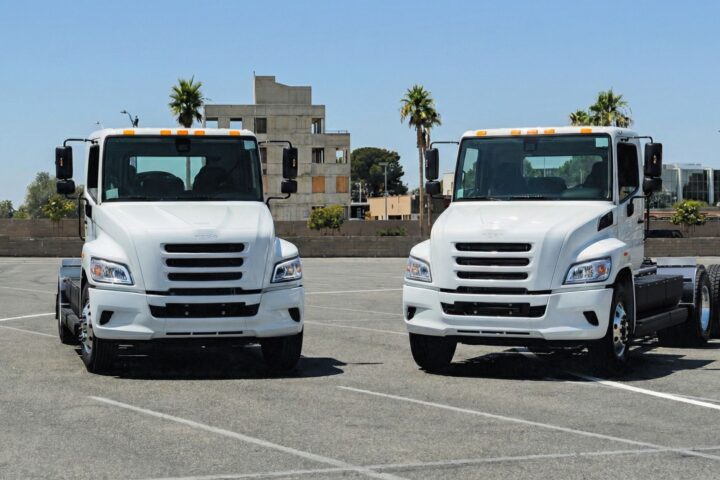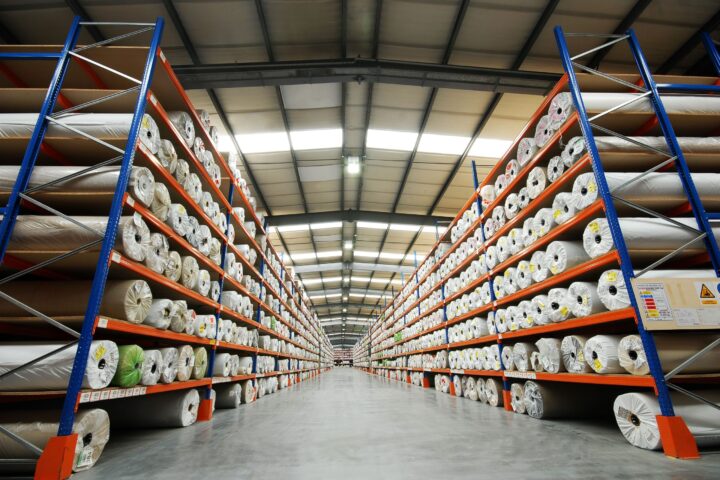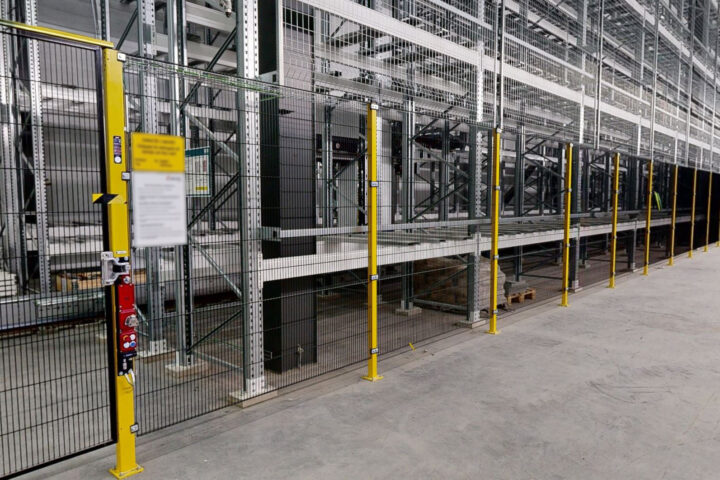This week marked a significant milestone for trade agreements. The United Kingdom and India have formally reached a Free Trade Agreement, which is the largest trade agreement for the UK since Brexit. As a result, 99 percent of Indian exports will benefit from zero duties in the UK market. Additionally, the United States and China have agreed to a 90-day tariff reduction, during which both countries will lower their tariffs on products from one another. In a related move, Temu has signed a lease for its largest warehouse in Vietnam to mitigate risks arising from the ongoing tariff complications between China and the US. Finally, for the first time, BYD has outsold Toyota in the first 4 months of 2025.
India and the UK Agree on a Historic Free Trade Agreement
 After over three years of negotiations, India and the United Kingdom have formally agreed to a Free Trade Agreement (FTA), marking a major milestone in their bilateral relations. Although the full text of the Agreement has not been released, the Indian industry has welcomed the development, even as concerns remain over potential impacts on agriculture and MSMEs. The deal is expected to be signed in three months and will take over a year to implement.
After over three years of negotiations, India and the United Kingdom have formally agreed to a Free Trade Agreement (FTA), marking a major milestone in their bilateral relations. Although the full text of the Agreement has not been released, the Indian industry has welcomed the development, even as concerns remain over potential impacts on agriculture and MSMEs. The deal is expected to be signed in three months and will take over a year to implement.
This Agreement is the most economically significant trade pact signed by the UK since Brexit, following similar deals with Australia and Japan. Although the EU remains the largest trading partner for both countries, the India–UK deal symbolizes a strategic reorientation and a step toward more diversified trade relationships. From India’s perspective, the trade deal complements its ambition to become a preferred manufacturing destination, encouraging businesses to diversify their investments. Indian industries anticipate further free trade agreements (FTAs) as these trade pacts are essential for integrating into the global value chain, according to the President of the Confederation of Indian Industry (CII).
Highlights of the India-UK Free Trade Agreement
- 99 percent of Indian exports to benefit from zero duty in the UK market.
- Indian import duty will be slashed, locking in reductions on 90 percent of tariff lines, 85 percent of these becoming fully tariff-free within a decade.
- India is reducing tariffs for: whisky, medical devices, advanced machinery, and lamb, making UK exports more competitive.
- Goods with reduced import duties for Indian consumers: cosmetics, aerospace, lamb, medical devices, salmon, electrical machinery, soft drinks, chocolate, and biscuits.
- Products with cheaper prices for British shoppers: clothes, footwear, and food products, including frozen prawns.
- Automotive tariffs will go from over 100 percent to 10 percent under a quota.
- Three-year exemption from social security payments for Indian employees working in the UK.
- Export opportunities for labor-intensive sectors such as textiles, marine products, leather, footwear, sports goods, toys, gems and jewellery, engineering goods, auto parts and engines, and organic chemicals.
U.S. and China Agree to a Temporary Tariff Reduction
 On May 12th, the United States and China announced an agreement to reduce tariffs on each other’s goods for 90 days. This is an outcome of a several day discussion of technical discussions held in Geneva between senior economic officials from both discussions held in geneva between senior economic officias from both sides. The United States will lower average tariffs on Chinese imports from 145% to 30%. China will also reduce its tariffs on U.S. goods from 125% to 10%. These measures have contributed to adjustments in cross-border trade flows and affected planning in industries reliant on bilateral supply chains. In the U.S., companies accelerated shipments to avoid tariff increases, leading to short-term logistical bottlenecks. In China, a decline in exports to the U.S. and lower manufacturing activity were reported in the months preceding the talks.
On May 12th, the United States and China announced an agreement to reduce tariffs on each other’s goods for 90 days. This is an outcome of a several day discussion of technical discussions held in Geneva between senior economic officials from both discussions held in geneva between senior economic officias from both sides. The United States will lower average tariffs on Chinese imports from 145% to 30%. China will also reduce its tariffs on U.S. goods from 125% to 10%. These measures have contributed to adjustments in cross-border trade flows and affected planning in industries reliant on bilateral supply chains. In the U.S., companies accelerated shipments to avoid tariff increases, leading to short-term logistical bottlenecks. In China, a decline in exports to the U.S. and lower manufacturing activity were reported in the months preceding the talks.
US and UK Trade Deal
 On May 9th, the United States and the United Kingdom announced a bilateral trade agreement focused on tariff adjustments across key trading sectors. The agreement formalizes a 10% baseline tariff on most goods imported into the U.S, including those from the UK. This replaces a range of higher tariffs imposed in prior years. While lower than previous maximums, the 10% rate remains above pre-2020 levels and applies broadly, unless specified by sectoral exemptions.
On May 9th, the United States and the United Kingdom announced a bilateral trade agreement focused on tariff adjustments across key trading sectors. The agreement formalizes a 10% baseline tariff on most goods imported into the U.S, including those from the UK. This replaces a range of higher tariffs imposed in prior years. While lower than previous maximums, the 10% rate remains above pre-2020 levels and applies broadly, unless specified by sectoral exemptions.
Automotive Sector:
- The U.S. will impose a 10% tariff on the first 100,000 vehicles exported annually from the UK. This reflects the UK’s current export volume. Exports beyond this threshold will be subject to a 27.5% tax. The UK’s current 10% tariff on U.S vehicle imports remains in place, through discussions on reducing it are ongoing. Aircraft parts, including Rolls-Royce components, will be exempt from tariffs.
Steel and Aluminum:
- The agreement eliminates the 25% tariffs previously applied to UK steel and aluminum exports to the U.S. However, exports are now subject to quotas and must meet origin requirements, including “melted and poured” conditions. Further details on derivative product eligibility and quota volumes have not been published.
For more highlights, read the full article here
Online Retailer Shein to Set up Huge Vietnam Warehouse in US Tariff Hedge
 Fast-fashion online retailer Shein is leasing a huge warehouse in Vietnam. A first for the country, a move that could reduce its exposure to the unpredictable nature of U.S.-China trade tensions. Originally founded in China and popular for their cheap products, such as $5 bike shorts and $18 sundresses, they have agreed to lease nearly 15 hectares of industrial land for a warehouse near Ho Chi Minh City, Vietnam’s commercial and trading hub. Shein is expanding its network of contractors in China and is also investing 10 billion yuan in industrial projects in the south of the country, including a $500 million supply chain hub near Guangzhou. The first phase of that hub is currently under construction, will span about 49 hectares.
Fast-fashion online retailer Shein is leasing a huge warehouse in Vietnam. A first for the country, a move that could reduce its exposure to the unpredictable nature of U.S.-China trade tensions. Originally founded in China and popular for their cheap products, such as $5 bike shorts and $18 sundresses, they have agreed to lease nearly 15 hectares of industrial land for a warehouse near Ho Chi Minh City, Vietnam’s commercial and trading hub. Shein is expanding its network of contractors in China and is also investing 10 billion yuan in industrial projects in the south of the country, including a $500 million supply chain hub near Guangzhou. The first phase of that hub is currently under construction, will span about 49 hectares.
BYD Tops Singapore Vehicle Sales so Far This Year, Replacing Toyota
 China’s BYD became the most popular vehicle brand in Singapore so far this year, outselling Toyota. For the first time, government data showed that the fast-growing electric vehicle maker is stepping up efforts to boost overseas sales. In the first flour months of 2025, BYD sold 3,002 cars or 20% of total vehicle sales in Singapore. Toyota and BYD’d main EV rivals of Tesla, sold 2,500 and 535 units each during the same period. Toyota used to hold the crown in the wealthy Asian financial hub, where the population of cars is kept steady by an expensive certificate system, selling 7,876 cars in 2024, versus BYD’s 6,191 sales. BYD’s robust sales growth in Singapore underscores its efforts to focus on overseas markets amid bruising price competition in China. Reuters reported this month that China’s No.1 automaker aims to sell half of its vehicles outside the Chinese market by 2030, a massive increase that would make it a rival to the world’s largest automakers.
China’s BYD became the most popular vehicle brand in Singapore so far this year, outselling Toyota. For the first time, government data showed that the fast-growing electric vehicle maker is stepping up efforts to boost overseas sales. In the first flour months of 2025, BYD sold 3,002 cars or 20% of total vehicle sales in Singapore. Toyota and BYD’d main EV rivals of Tesla, sold 2,500 and 535 units each during the same period. Toyota used to hold the crown in the wealthy Asian financial hub, where the population of cars is kept steady by an expensive certificate system, selling 7,876 cars in 2024, versus BYD’s 6,191 sales. BYD’s robust sales growth in Singapore underscores its efforts to focus on overseas markets amid bruising price competition in China. Reuters reported this month that China’s No.1 automaker aims to sell half of its vehicles outside the Chinese market by 2030, a massive increase that would make it a rival to the world’s largest automakers.
Song of the week:












